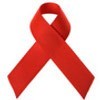By Joe Mejía
Think fast: What was the first feature film about AIDS?
Chances are, you guessed Philadelphia (1993), starring Tom Hanks and Denzel Washington. Wrong. Or maybe you knew better and guessed An Early Frost, starring Aidan Quinn (1985). Close—but wrong again. Frost was a) a made-for-TV movie and b) premiered months after the correct answer: Buddies (September 1985).
The newly rediscovered and digitally restored Buddies, written, directed and edited by Arthur J. Bressan Jr., who died of AIDS-related complications in 1987, is now claiming its rightful place in history. It’s all thanks to the efforts of film historian Jenni Olson, who worked with Bressan’s sister, Roe Bressan, to secure the rights to the movie, and cult-film distributor Vinegar Syndrome, which has issued a Buddies DVD/Blu-ray combo pack of the film that you can buy here. (Frameline Distribution hopes to make the movie available for streaming next year.)
Filmed in nine days in New York and Washington, DC, on a shoestring budget (even by 1980s standards) of $27,000, Buddies is a moving, intimate portrait of two very different gay men and their evolving relationship during the peak days of the AIDS epidemic.
In the film, reserved and apolitical 25-year-old David Bennett (David Schachter), a volunteer for “the Gay Center” is assigned to be a “buddy” to 32-year-old Robert Willow (Geoff Edholm), a fellow gay man, who, abandoned by friends and family, is dying of AIDS-related complications alone in a quarantined room in St. Matthews Hospital in New York City.
Robert, an outspoken activist and onetime bon vivant, is asleep in his hospital bed, sick with pneumonia and Kaposi sarcoma, when David, clad in a hospital gown and a surgical mask (per the hospital’s orders), enters his room for the first time.
Initially, the two men clash, with David early on confessing in his journal: “I’ve never met a person like Robert Willow—he unnerves me." But over several months and many bedside visits, the men open up to each other and develop a mutual respect and love that surprises—and changes—them both. David becomes “woke,” in today’s parlance, while, aided by David’s acceptance and affection, Robert achieves emotional catharsis in the face of his mortality.
David and Robert’s far-ranging, earnest conversations offer a primer on the early days of the AIDS epidemic, spanning such topics as gay visibility, AIDS stigma, and the willful lack of government funding for research and treatment.
Olson told Vice, “I really love the idea of Buddies as a kind of time-capsule message from the gays of 1985 to the gays of 2018.” Indeed, in its dramatization of a time before effective antiretroviral treatment—before the term HIV was even in common usage—the film successfully captures a bygone era, complete with dated props like landlines, VCRs and dot-matrix printers.
On the one hand, the film is a work of fiction inspired by real life’s 1982 GMHC Buddy program, New York’s St. Vincent’s Hospital, and the countless gay men like Robert and David who died of and survived AIDS; on the other hand, it mirrors our present-day reality, where the criminalization of HIV, inequitable access to health care and medications, and diminishing funds for research serve as obstacles to progress in the fight against HIV/AIDS.
Much has changed since 1985, but the need for buddies persists, as evidenced by the relaunch in 2015 of GMHC’s Buddy Program, which now, thanks to effective HIV medications, primarily pairs buddies with people living with HIV (often long-term survivors) rather than people dying of AIDS.
In addition to “the kindness of loving strangers” (the phrase is the title of an essay in The AIDS Reader, the book that David, a freelance typesetter, is at work laying out in the film), something else still needed today, as Robert suggests, is a reminder to the complacent or the simply uninformed that HIV is not the concern of one particular group—it affects everyone.








15 Comments
15 Comments